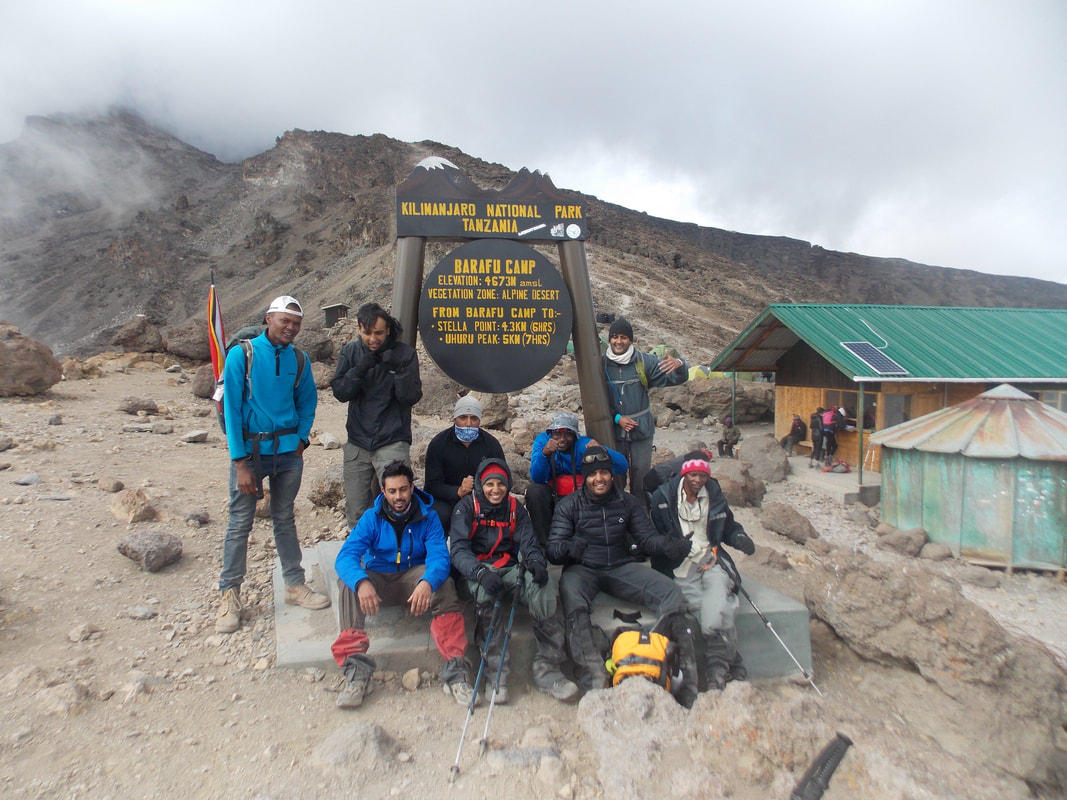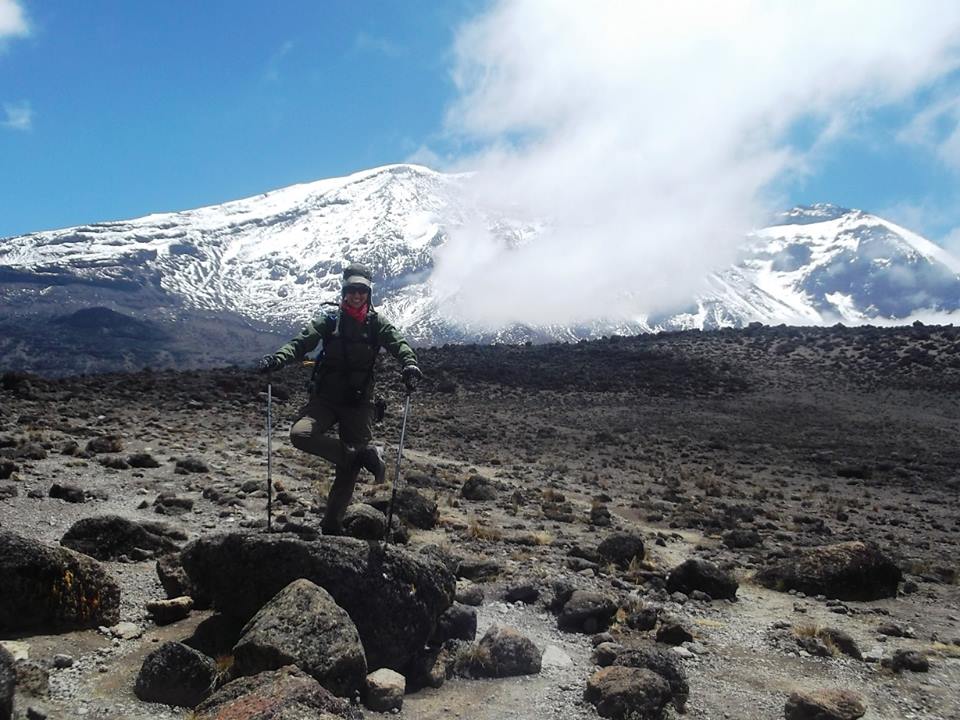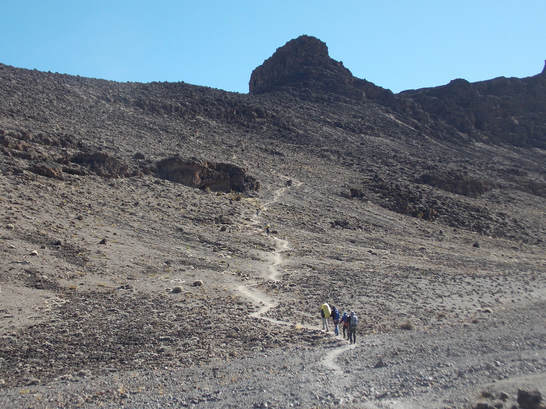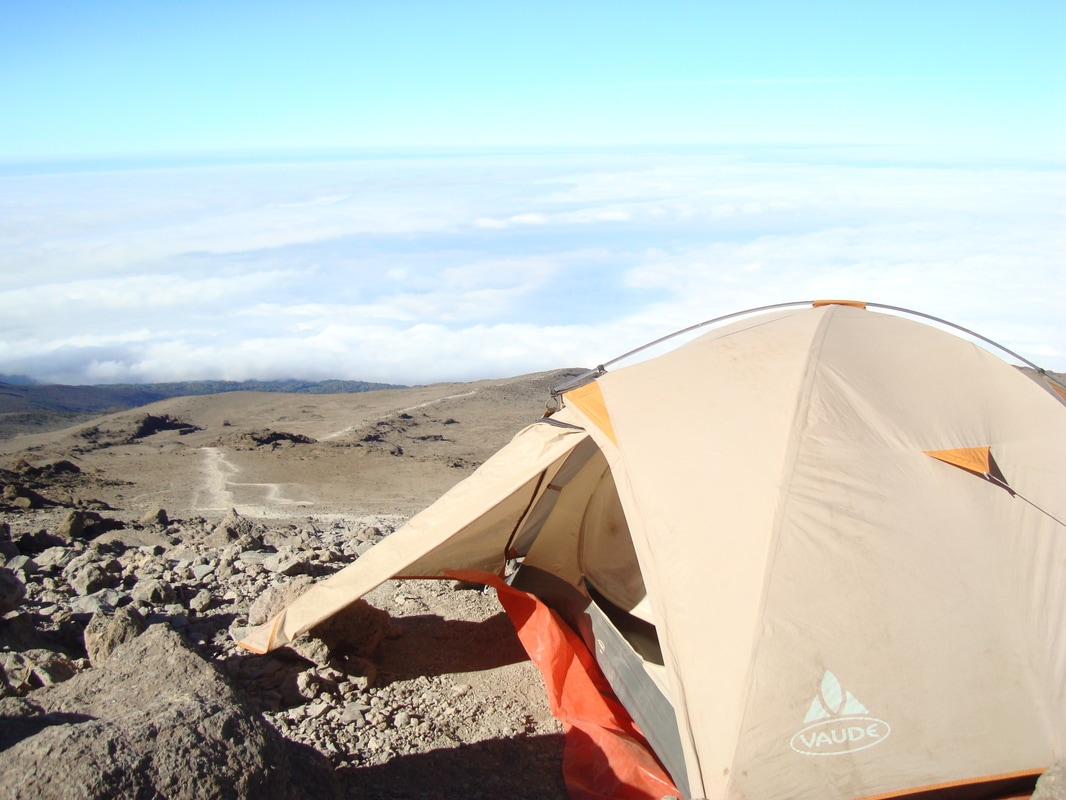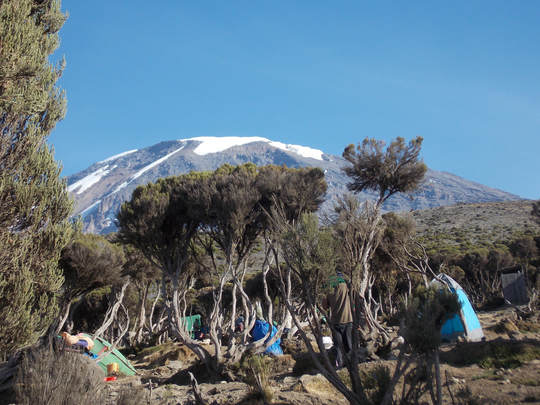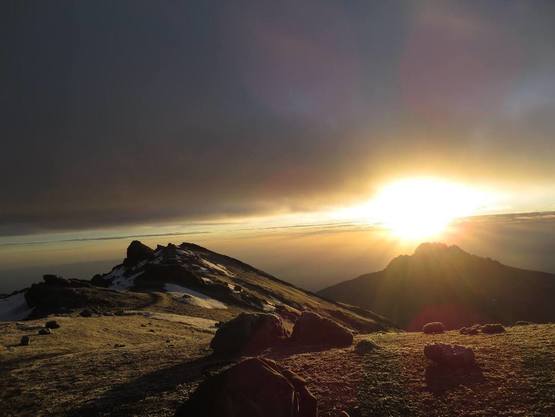The majestic snow-capped Mount Kilimanjaro, rising out of the plains of the Tanzanian savannah at 5,895 m, is the highest free standing mountain in the world and the highest mountain in Africa and one of the seven summits. With that said, it is an excellent challenge for even the most experienced hiker. Although Kilimanjaro is often know for it's epic volcanic cone- Mt Kibo, it is in fact made up of three volcanic cones - Kibo, Mawenzi and Shira. Kobo has 7 official routes, with all promising epic views of snow-capped Kibo and surrounding mountain beauty.
ROUTES
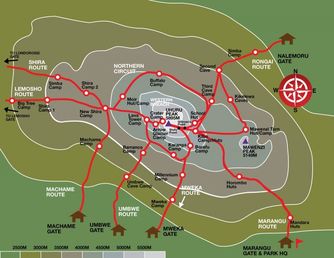
Mt Kilimanjaro has a total of 7 official routes- Machame, Marangu, the Northern Circuit, Umbwe, Lemosho, Mweka and Shira - all of which lead to the slopes of Kibo, where the highest point ‘Uhuru’ can be summited. Selecting a route based on trek difficultly level and fitness of the group, scenery, acclimatization factor (gain in elevation per day) and climber traffic is important to consider. The Marangu, Machame, and Umbwe routes all approach from the south side of the mountain. The Lemosho, Shira and Northern Circuit routes approach from the west side, and the Rongai route approaches from the north.
We highly recommend the following routes based on the above mentioned considerations:
Route |
Level of Difficulty |
Scenery, points of interest, coverage |
Traffic on Route |
Minimum # of days required |
Recommended # of Days |
Machame Route |
High |
Excellent |
High |
6 |
7 |
Lemosho Route |
High |
Excellent |
Medium |
6 |
8 |
Rongai Route |
Medium |
Very Good |
Low |
6 |
7 |
Northern Circuit Route |
High |
Excellent |
Very low |
9 |
9 |
RONGAI ROUTEThe Rongai route begins close to the Kenyan border, and has low human traffic. It is selected by those who would like a more remote/secluded hike, and is also chosen during the rainy season because the northern side receives less precipitation. The views are not as diverse as the western routes, though is does have more of a wilderness feeling prior to joining the Marangu route at Kibo Camp. The descent is via the Marangu route. In terms of difficulty it is rated easier than Lemosho or Machame, and if the team’s experience in alpine backpacking is relatively new or at beginner level then this route is recommended. This can be done in 6 days though 7 is recommended.
NORTHERN CIRCUIT ROUTEThe Northern Circuit is a fairly new route and is the longest and one of the most scenic routes on Mount Kilimanjaro. It ascends from the western slope of Kibo commencing at the Londorossi Gate, and follows the Lemosho Route for the first two days. After crossing the Shira Plateau the path moves north near Lava Tower, following the longer Northern Circuit instead of the more popular Southern Circuit via Barranco Valley (namely the Machame Route). There are a few different route variations from this point; however, all approach the summit via Gilman’s Point and then either descend via the Mweka Route joining trekkers from the Machame, Umbwe, Lemosho and Shira routes, or via the Marangu Route. This trek is a nine day climb, which is the longest route in terms of time and distance travelled. One benefit of the Northern Circuit Route is its quick rise to relatively high elevations and a short ascent to the Lava Tower (alt. 4600m) on Day 4 before descending to Moir Hut (alt. 4,200m) on the same day and to Buffalo Camp on Day 5 (alt. 4,020m) only to reach a slightly higher elevation than Lava Tower on Day 7 at School Hut (alt. 4800m). Like the other routes, this follows a climber’s motto of ‘climb high, sleep low’, and helps in altitude acclimatisation. All climbers sleep in four season tents and meals are served in a mess tent. Climbers descend down the Mweka trail and stay at the Mweka camp on final night on the mountain. With a high success rate, diverse scenery and a very low number of visitors, the Northern Circuit route is one of the best routes on Kilimanjaro. We recommend 9 days for this route.
UMBWE ROUTEOf the 7 official routes the Umbwe route is the most challenging of all, one that is only recommended to trekkers with previous alpine experience. Open in 1963, it provided the shortest ascending route to the southern glaciers and the western breach of Kibo. This route begins from the south side of Mt. Kilimanjaro, with a more or less direct climb to the peak, one that is short and very steep. The ascension profile is irregular, thus making it difficult to acclimatise, therefore it is highly recommended to attempt this route in 7 days. Many climbers take this route to get to the technical climb of the Western Breach, though the Shira Route provides much easier access to the same. At Barranco Camp the trek joins with the southern circuit to the summit after which the Mweka trail is used for the descent. On the plus side, this route has the least human traffic and is very scenic by circling a quarter way around Kibo with great views from all angles. This route is approximately 53km comprising of strolls and every day hikes through the montane forest, the moorland, across the semi-desert, as well as the Alpine desert and rock finally to point ‘Uhuru’, the ice-capped summit through the unforgiving rocky screes. All climbers sleep in four season tents and meals are served in a mess tent. Upon descent the climbers can either stay at the Mweka camp or at the Millennium Camp (midway between Barafu camp & Mweka Camp) on final night.
|
MACHAME ROUTEThe Machame route is the most scenic route on the mountain and the most popular routes. It circles halfway around Kibo, with great views from all angles. This route is approximately 40km comprising of strolls and every day hikes through the montane forest, the moorland, across the semi-desert, and the alpine desert. This routes leads to point ‘Uhuru’, the ice-capped summit through rocky scree. The scenery is diverse, providing really stunning panoramic views, though as of the last couple of years the high number of groups going up this trek does take away from a peaceful experience (especially during the favorable weather windows). One benefit of the Machame route is its quick rise to relatively high elevations and a short ascent to the Lava Tower (alt. 4600m), before descending to Barranco Camp (alt. 3950m), only to reach the same elevation at Barafu Camp (alt. 4600m). This follows a climber’s motto of ‘climb high, sleep low’, and helps in altitude acclimatisation. All climbers wll sleep in four season tents and meals are served in a mess tent. Climbers descend down the Mweka trail and stay at the Mweka camp on final night on the mountain. We recommend 7 days instead of 6 days with an acclimatisation break between Baranco Camp and Barafu Camp, with an additional night at Karanga Camp.
LEMOSHO ROUTEThe Lemosho route is one of the newer routes on the mountain and very scenic route. Beginning from the base of the western slope, offering a trek where you will circle halfway around Kibo with superb views from all angles. You will cross the Shira plateau from Shira Ridge to Shira camp. This route is approximately 70km comprising of strolls and every day hikes through the montane forest, the moorland, across the semi-desert, as well as the alpine desert finally leading to point ‘Uhuru’, the ice-capped summit through the unforgiving rocky screes. It is a low traffic route until it joins Machame Route through the Lava Tower, Barranco and Barafu. One benefit of the Lemosho route is its quick rise to relatively high elevations and a short ascent to the Lava Tower (alt. 4630m) before descending to Barranco Camp (alt. 3950m) on day 4, only to reach the same elevation on Day 6 at Barafu Camp (alt. 4600m). This follows a climber’s motto of ‘climb high, sleep low’, and helps in altitude acclimatisation. All climbers sleep in four-season tents and meals are served in a mess tent. Climbers descend down the Mweka trail and stay at the Mweka/Millenium camp on final night on the mountain. We recommend 7 days for this routes.
MARANGU ROUTEThe Marangu route is commonly known as the “Coca Cola” route. The name is derived from its touristy setup offering sleeping huts all the way up, serving beverages like Coca-Cola! The ascension profile is very gradual and steady, allowing for painless trekking for most of the way. The route also offers the best trail in the rainforest section with ample flora and fauna to admire. The trek begins in the south-east area of the mountain at Marangu Gate taking a minimum of five days to complete, although six days is more practical and highly recommended for better acclimatisation. The sleeping huts along the route are structures with a dining hall and bunk beds, equipped with mattresses and pillows. Moreover, the relative 'comfort' of sleeping in huts is especially welcome if one is climbing Kilimanjaro during the rainy season. Climbers descend down the mountain using the same Marangu trail.
|
What we include....
All of our expeditions include a full service crew, a personalised menu and private transfers
Professional Service CrewAll expeditions included a Camp Manager, professional guides, mountain chef, personal and general porters
|
Personalised MenuGluten-free? Vegetarian? No problem- our chef will personalise the menu to ensure that you are energised!
|
Private transfersNeed a safe ride to the gate? We offer safe and secure private transfers as required
|

